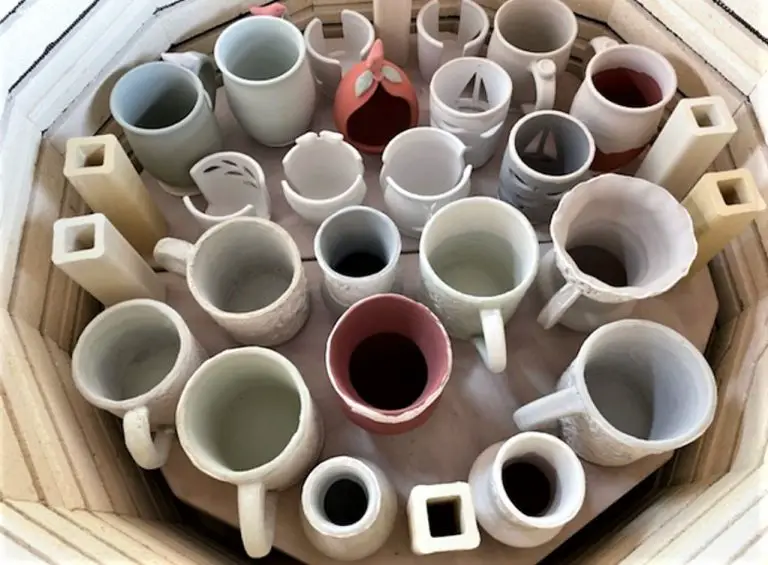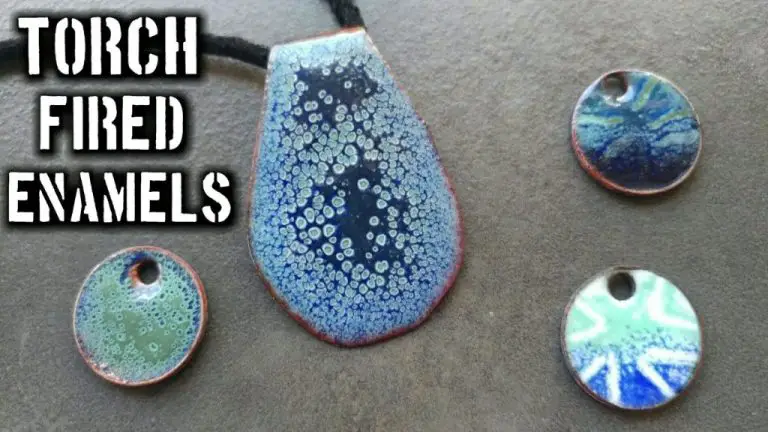What Is It That Actually Turns The Pottery Black?
Pottery can turn black during the firing process due to chemical changes that occur at high temperatures. The black color is caused primarily by the presence of carbon and certain metal oxides, which are formed or deposited on the clay surface under reducing conditions inside the kiln.
Specifically, iron oxide and manganese oxide compounds in the clay body undergo a chemical reaction during firing that causes them to lose oxygen atoms and become new compounds that have a black or dark gray color. In addition, incomplete combustion of organic materials present in the clay can deposit black carbon or soot onto the pottery surface.
By carefully controlling the kiln atmosphere and firing regimen, potters can promote the chemical and physical changes that produce black colors on pottery. This allows them to create the deep black finishes and patterns that have been prized in certain styles of pottery across various cultures and time periods.
Chemical Changes During Firing
Firing is the process of exposing clay to high temperatures, which causes chemical and physical changes that transform it into ceramic. As the temperature rises, minerals in the clay start to undergo pyroplastic deformation, where they soften and melt. This is what initially turns the clay into a solid object.
At higher temperatures from 900°C to 1200°C, more significant chemical changes begin to occur. Fluxing agents like silica start to react and form silicate glass, which acts as a glue to bond and harden the ceramic. The previously softened minerals will begin to recrystallize into new configurations.
Oxidation also takes place on the surface, where any organic material burns away, and existing minerals oxidize by reacting with oxygen. This process leaves behind metal oxide compounds that contribute color and other properties to the final ceramic. So the high heat essentially restructures the clay’s molecular makeup into a new, hardened material.
Reduction Firing
Reduction firing is a key process in creating black pottery. During reduction firing, oxygen is removed from the kiln environment. This is done by restricting airflow into the kiln once the pottery has reached its maximum temperature. As a result, the pottery is no longer exposed to oxygen as it cools. This oxygen-depleted environment has a chemical reducing effect on the clay and glazes in the pottery.
With less oxygen available, carbon monoxide is produced from the burning fuel instead of carbon dioxide. Carbon monoxide removes oxygen from metal oxides in the clay and glazes. This reduction process affects certain metal oxides and causes the color changes that create the distinctive black tones in reduction-fired pottery.
Formation of Carbon
During the reduction firing process, carbon is deposited onto the surface of the pottery, turning the clay black. This happens because at high temperatures (around 950°C or 1700°F), the oxygen in the kiln is depleted. This oxygen-depleted environment allows carbon monoxide gas to form from the incomplete combustion of organic materials in the clay and glazes.
The carbon monoxide interacts with the hot clay, oxidizing into carbon dioxide and depositing carbon onto the surface. This carbon chemically bonds with elements in the clay, especially iron and manganese oxides, to form black pigments. The amount of carbon deposited controls the degree of blackness. More carbon leads to a deeper, jet black color.
Iron Oxides
The iron naturally present in clay is a key factor in producing black coloration on pottery. During firing, iron oxidizes from its ferrous state (Fe2+) to its ferric state (Fe3+). This oxidized iron forms black iron oxide compounds like magnetite (Fe3O4) and hematite (Fe2O3).
These iron oxide compounds produce black, brown, and deep orange hues. The more iron a clay contains, the darker the colors will be when fired under oxidizing conditions. However, reducing conditions are required to produce a true black finish.
Manganese Oxides
Manganese is another metal oxide that can create black coloring in ceramics. When clay containing manganese is fired in a reduction atmosphere, the manganese oxidizes from manganese oxide (MnO2) to manganese monoxide (MnO). This reaction causes the manganese to turn black. The MnO acts as a coloring agent and will permeate the clay body to create an overall black appearance.
Manganese occurs naturally in some clay deposits, especially certain blended clays. It can also be added to clay by potters as a colorant. When present in sufficient quantities, manganese provides a rich black color in reduction firing. The depth of blackness depends on the manganese content in the clay body.
Soot Deposits
Soot from smoke can make pottery black. As the pottery is fired, smoke can be introduced into the kiln, either intentionally or unintentionally. This smoke contains fine carbon particles called soot that will settle and stick to the surface of the pottery. As the clay vitrifies during firing, these soot particles will fuse to the surface, creating a thin black layer.
In some cases, potters would intentionally add organic materials like sawdust, leaves, or dung to the kiln to generate soot and smoke. The soot coats the pottery, turning it black. This method was commonly used in ancient times and traditional pottery making. The amount of soot can be controlled by the materials added and the airflow in the kiln.
Even in modern pottery firing, some soot can unintentionally deposit from incomplete combustion of the fuels used to fire the kiln. Natural gas and wood kilns often generate small amounts of soot. The soot particles will make the pottery black unless proper airflow and complete combustion are maintained in the kiln.
Other Factors
In addition to reduction firing, the composition of the clay body and glazes as well as the length of the firing process can also affect the blackness of the finished pottery.
Certain clays that are high in iron oxide content will more readily turn black when fired in a reduction atmosphere. The natural minerals present in the clay body provide the main source of iron that interacts with carbon to produce black coloring.
Likewise, glazes with higher amounts of iron oxide and other transition metal oxides like manganese oxide will turn a very dark color under reduction firing conditions. So the chemistry of the glazes used can intensify the depth of blackness.
Finally, the longer the pottery can be kept at the maximum firing temperature in a reduction atmosphere, the more thoroughly the chemical reactions will proceed to completion. Longer firing times allow the iron and carbon to fully permeate the clay and glazes for an opaque, rich black finish.
Modern Production
In modern commercial pottery production, potters have much greater control over the firing process and can precisely regulate the temperature, oxygen levels, and duration of firing. This allows them to consistently produce black colored pottery on a large scale.
Potters use specialized gas or electric kilns with precise digital controls and pyrometers to monitor the internal temperature. The kilns are designed to carefully regulate the amount of oxygen reaching the pottery. Modern glazes are also scientifically engineered to enhance black coloring effects.
For mass production, potters often use reduction firing chambers attached to the main kiln. The pottery is first biscuit fired in the main kiln then moved to the reduction chamber for the final firing under a controlled low-oxygen environment. This allows efficient large-scale production of black pottery items.
Some modern potters also use alternative methods like smudge firing, where pottery is placed in a closed chamber filled with combustible materials like sawdust or leaves. As the organic material burns, it consumes oxygen and creates carbon that absorbs into the clay. This technique doesn’t require specialized kilns and allows more artisanal black pottery production.
Conclusion
In summary, the process of firing pottery can produce black coloration through a few key chemical transformations. Reduction firing limits oxygen availability, causing carbon molecules to deposit on the clay surface. Iron and manganese oxides already present in the clay body also undergo chemical changes in the kiln environment, producing black pigments. Soot buildup from smoke in the kiln provides additional dark color. While ancient potters may not have understood the science behind these chemical reactions, they discovered how to create beautiful black pottery through intuition and experimentation with the firing process. Modern production techniques offer more control over firing conditions to precisely calibrate color results. But the fundamental chemistry that bonds carbon and oxide pigments to clay remains essentially the same, continuing an ancient artistic tradition.






